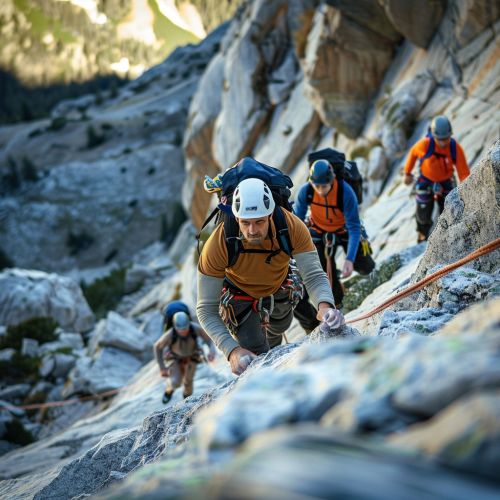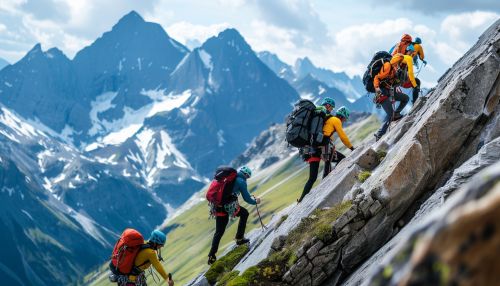Mountain Climbing
Introduction
Mountain climbing, also known as mountaineering, is the sport, hobby or profession of hiking, skiing, and climbing mountains. While it began as attempts to reach the highest point of unclimbed big mountains, it has branched into specializations that address different aspects of the mountain and consists of three areas: rock-craft, snow-craft and skiing, depending on whether the route chosen is over rock, snow or ice. All require experience, athletic ability, and technical knowledge to maintain safety.


History
The history of mountain climbing can be traced back to the time of the ancient Greeks. The sport of mountain climbing was born in 1760, when a young Horace-Bénédict de Saussure, a Swiss scientist and explorer, offered prize money for the first person or team to reach the summit of Mont Blanc, Europe’s tallest peak.
Equipment
Mountain climbing requires a very specialized set of gear which may include: a helmet, climbing shoes, harness, rope, chalk, carabiner, and belay device. The equipment used depends on the style of climbing, the skill level of the climber, the type of rock, and the weather conditions.
Techniques
There are various climbing techniques that are used based on the terrain and the specific mountain. These include but are not limited to: scrambling, alpine climbing, rock climbing, ice climbing, mixed climbing, and aid climbing.
Safety
Safety is a critical aspect of mountain climbing with climbers needing to understand and manage the risks associated with the activity. This can include understanding weather conditions, having the correct equipment, and knowing the terrain.
Training
Training for mountain climbing is a critical component to ensure safety during the climb. This can include physical training, skills training, and mental training.
Environmental Impact
Mountain climbing can have a significant environmental impact. This can include erosion, deforestation, and other negative impacts on local ecosystems. It is important for climbers to understand and minimize their impact on the environment.
